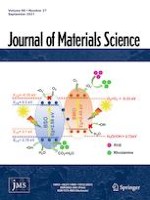04-07-2021 | Energy materials
Molding preparation and research on performance of low-electrostatic-sensitivity, high-output carbon-based copper azide based on metal–organic framework/graphene oxide
Published in: Journal of Materials Science | Issue 27/2021
Log inActivate our intelligent search to find suitable subject content or patents.
Select sections of text to find matching patents with Artificial Intelligence. powered by
Select sections of text to find additional relevant content using AI-assisted search. powered by
